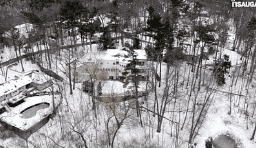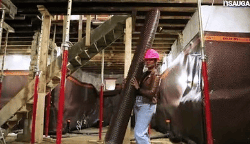Changes Coming to Fire Safety Protocol in Mississauga
Published March 30, 2019 at 2:28 am

While any fire can be devastating, fires in mid and high-rise buildings can be uniquely terrifying in the sense that they can more easily spread to other units.
For that reason, the City of Mississauga says that Mississauga Fire has a new plan that involves inspecting every high-rise/midrise, commercial and industry building in Mississauga annually or every two years.
According to the city, Mississauga Fire and Emergency Services (MFES) has developed a new Fire Risk Mitigation Plan for residents, building owners and managers in more than 1,890 mid-rise and high-rise buildings in Mississauga.
The plan is a proactive fire prevention approach that teaches residents how to prevent fires and what to do when a fire does occur. The plan encourages building owners and managers to understand the requirements of the Ontario Fire Code, while giving those tools to ensure the building meets those standards.
“The plan is to inspect every high rise, mid-rise, commercial and industrial building in Mississauga either annually or every two years depending on risk,” says Tim Beckett, Fire Chief and director of emergency management.
“When buildings are in compliance of the Fire Code, work properly and people know what to do to prevent fires, the number of building fires decreases. While we can’t prevent every fire from occurring, we can try our best to stop them from happening. We have fire suppression resources strategically located across the city so we can respond quickly to all emergency calls.”
Currently, MFES conducts inspections based on a complaint or when requested by residents, building owners, managers or MFES operational staff as legislated.
This will change with the new proactive fire inspection program being rolled out this year.
MFES conducted a Comprehensive Risk Assessment that identified key risks across the city. Each key risk was then classified by risk level and a risk mitigation plan was developed.
“When buildings are in compliance of the Fire Code, work properly and people know what to do to prevent fires, the number of building fires decreases,” Beckett says.
“While we can’t prevent every fire from occurring, we can try our best to stop them from happening. We have fire suppression resources strategically located across the city so we can respond quickly to all emergency calls.
While public education and proactive fire inspections are the primary focus of this plan, the city says fast and reliable emergency response is still a critical component.
The plan will complement the city’s Crew Fire Safety Assessment Program that launched in 2018. This program uses on duty fire suppression crews to conduct initial fire safety assessments to identify any deficiencies with the top 10 fire code requirements including fire sprinklers, standpipe systems and fire hoses. If crews are unable to obtain compliance or deficiencies pose an immediate risk to life safety, a request is made for the fire prevention unit to conduct a full fire safety inspection.
For more information, click here.
insauga's Editorial Standards and Policies advertising





